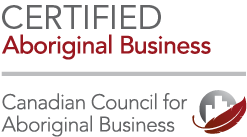Water is the most damaging contaminant found in fuel.
Water destroys the lubricating properties of fuel and can quickly scour or blow injector tips and pumps.
Water can freeze and stop fuel flow.
Water can be present in your fuel as free water and or emulsified water.
Free water gets into your fuel as storage tanks condensate while dispersing or receiving fuel. Dissolved water can turn to free water as the temperature changes.
Diesel fuel has a saturation point and as the temperature goes down the fuel will hold less dissolved water. Water will fall out as free water.
Emulsified water is what causes fuel to appear milky and will not allow fuel to look like apple juice. Water, within limits, can be removed from fuel by absorption, coalescing or by stripping.
Types of Filtration
Absorption of water from fuel takes place when the media (usually corn paper) within the filter absorbs the water passing through it. If there is significant water contamination, the filter’s media will swell and block the fuel flow. The fuel delivery rate then slows or stops entirely. This will signal the user to change the filter. Typical uses for this type of filter would be on storage tanks for Aviation fuel, where you do not want any free water to pass from one tank to another during fuel transfer.
Coalescing is the method that uses gravity and low flow rates to let water droplets drop out of your fuel and collect at the bottom of the fuel filter.
Stripping uses a silicone-treated medium in the filter that limits the flow of water through it, while allowing free fuel flow through the filter and onto the injectors.
By using fuel filtration wisely on fuel tanks or any type of equipment and understanding the principles of filtration and how it removes water you will be able to prevent water in your fuel and equipment.
We can install pre-filtration to suit your needs after we clean your tank and your fuel.
Call or email to speak to a Fuel Tech today.


